PHOTOS: The Wit and Genius of the Father of Video Art Nam June Paik
Photos and videos from the American Art Museum’s new exhibit, “Nam June Paik: Global Visionary”
![]()
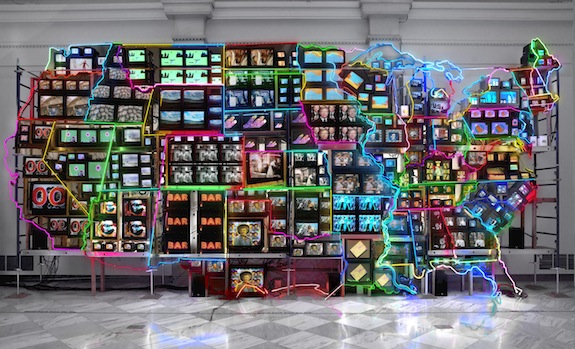
Nam June Paik, Electronic Superhighway: Continental U.S., Alaska, Hawaii (detail), 1995
He built robots, pioneered the field of video art and coined the term “electronic superhighway” in 1974 to predict our age of communications technology. When he died at the age of 73 in 2006, Korean American artist Nam June Paik was described by the New York Times as ”a shy yet fearless man who combined manic productivity and incessant tinkering with Zen-like equanimity.”
“A lifelong Buddhist,” the obituary went on, “Mr. Paik never smoked or drank and also never drove a car. He always seemed amused by himself and his surroundings, which could be overwhelming: a writer once compared his New York studio to a television repair shop three months behind schedule.”
In 2009, the Smithsonian American Art Museum received the legendary artist’s archives, acquiring all the old televisions, robotics materials and artwork from the artist’s estate. After organizing the highly-acclaimed Paik retrospective at the Whitney Museum of American Art in 1982, curator John Hanhardt came to the Smithsonian precisely so that he could work among this treasure trove of archived materials and artworks, including the 1995 piece Electronic Superhighway: Continental U.S., Alaska, Hawaii.
Now, Hanhardt’s long labors have resulted in a new tribute to the influential artist, “Nam June Paik: Global Visionary,” which opens December 13.
“He was an extraordinary figure,” says Hanhardt of the artist, whom he first met in the early 1970s. “He was so dynamic, ideas were constantly coming from him.”
“He was also extremely funny, irreverent,” he adds, “and you see that in a lot of his work, very playful. He wanted to bring people in by being playful.”
The shows 67 artworks and 140 items from the archives reveal the true genius of a man who worked in film, music and interactive technologies.
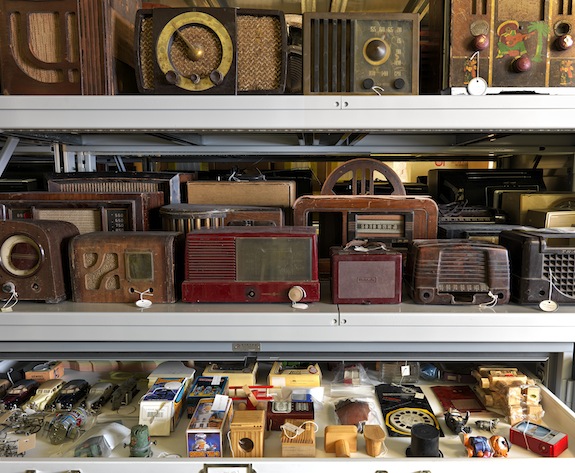
Some of the items from the Nam June Paik Archive which curator John Hanhardt studied. “Walking through the exhibition, you’ll see how he reinvented the idea of music and performance and then went on to make television interactive,” says Hanhardt.
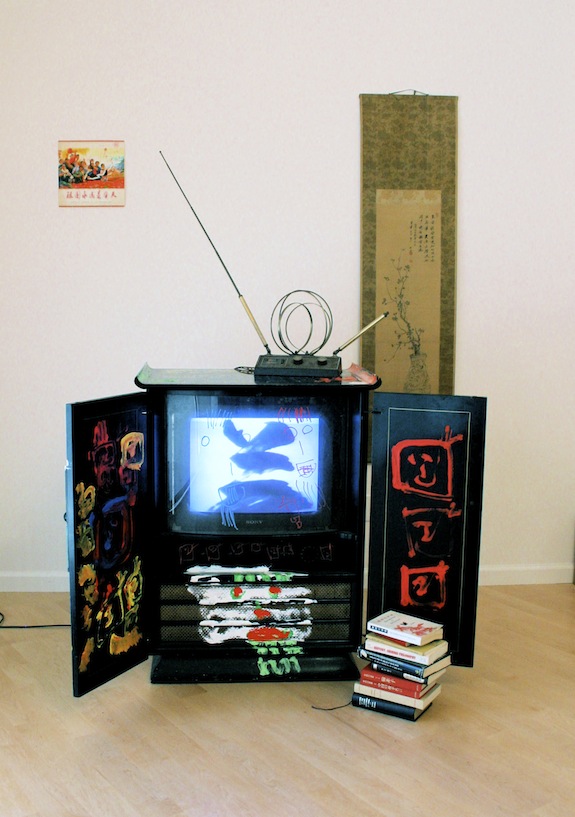
Sorting through the archive materials, Hanhardt found new discoveries, including extensive writings from the artist about China’s relationship to the world. “This was a constant inquiry of his,” says Hanhardt. Nam June Paik, Chinese Memory, 2005
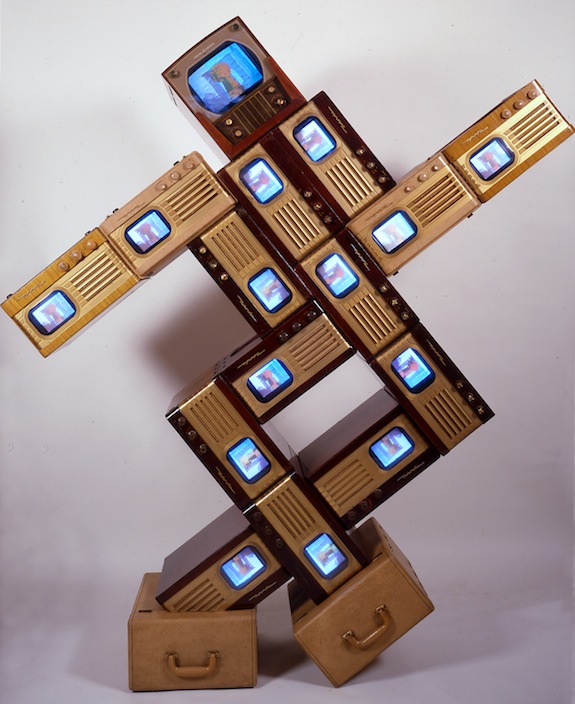
Hanhardt says Paik “would make human forms out of old televisions and radios,” in order to humanize technology. Nam June Paik, Merce/Digital, 1988
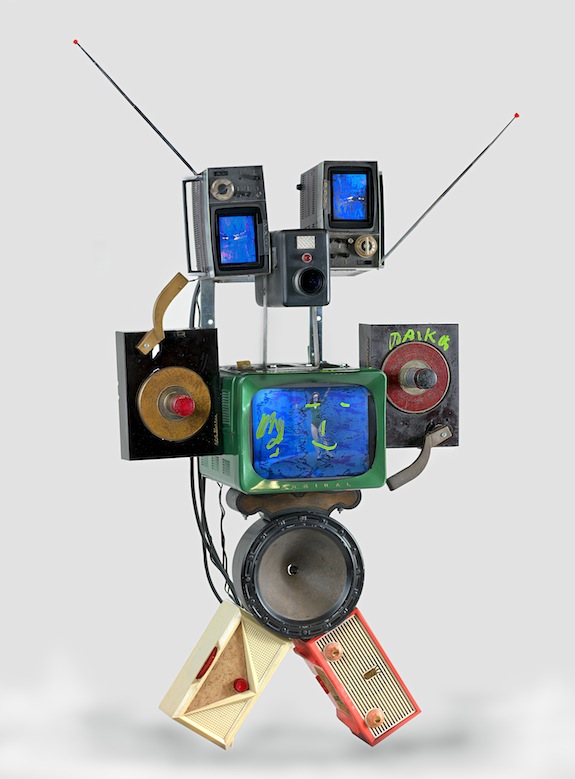
Paik often invented new tools to create his works, including his family of robot sculptures. Hanhardt says, “A new generation is looking at how to get back to that human direct engagement with the materials of technology.” Nam June Paik, Untitled (Robot) , 1992
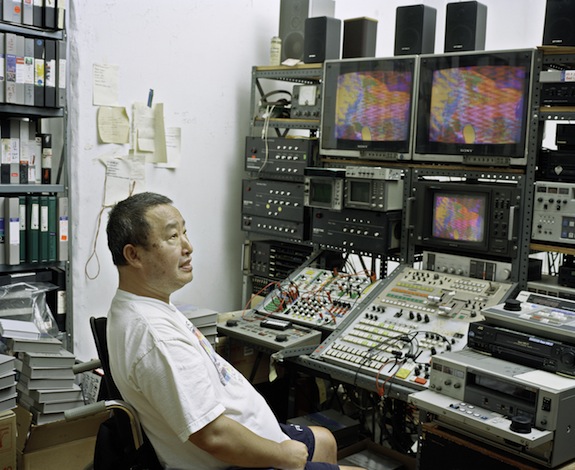
“He gave us a new way to see ourselves and the world around us,” says Hanhardt. Paik pictured in his New York editing studio in his home on Mercer St. Photo by David Heald © The Solomon R. Guggenheim Foundation
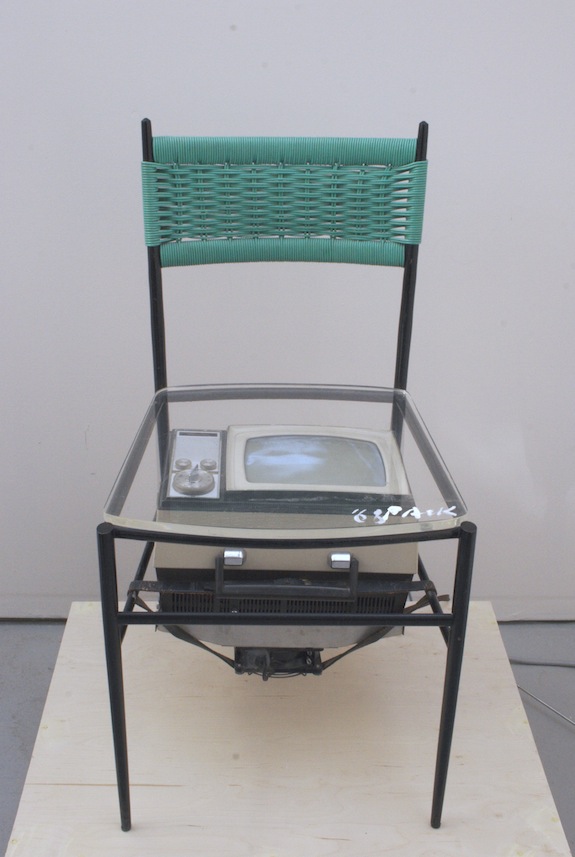
Hanhardt admires Paik’s playful works, like TV Chair, which includes a monitor in the chair’s seat and a camera above it. “If you sit on it, you’re in the image, but you couldn’t see it!” Nam June Paik, TV Chair, 1968
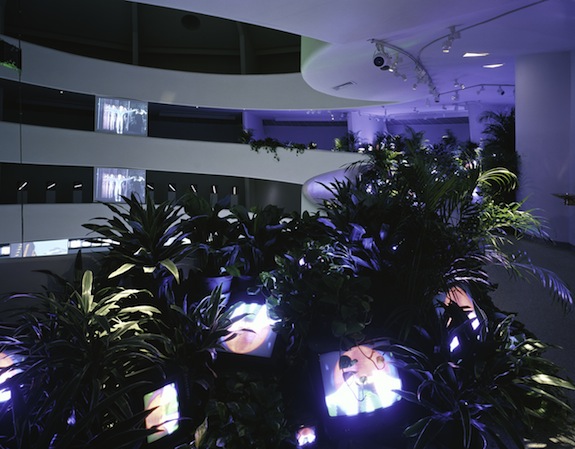
One of the central works of the show, TV Garden, embeds televisions in a lush setting. “Here’s a space,” says Hanhardt, “filled with plants and televisions playing his videotape Global Groove, a tape that begins with the statement, imagine a future where TV Guide is as thick as the Manhattan telephone directory. So he was imagining this idea of multiple channels, multiple modes of access, this idea of distributing information and getting access to it, as well as being an artist’s medium.” Nam June Paik, TV Garden, 1974/2000
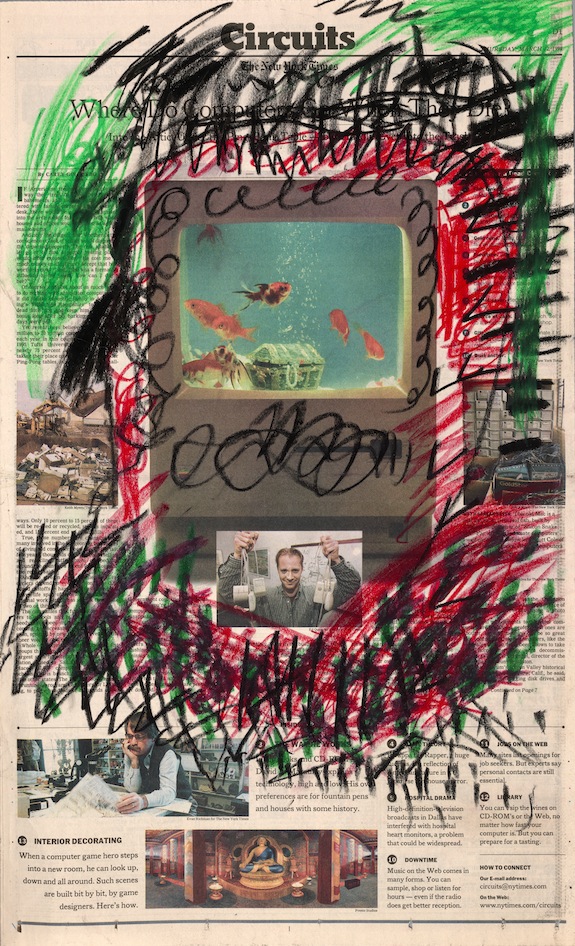
“He wrote in this aphoristic style,” says Hanhardt, “so his ideas would just pop.” Nam June Paik, Untitled (Newspaper Drawing), 1990s
“Nam June Paik: Global Visionary” is at the American Art Museum through August 11, 2013.
/https://tf-cmsv2-smithsonianmag-media.s3.amazonaws.com/accounts/headshot/Leah-Binkovitz-240.jpg)
/https://tf-cmsv2-smithsonianmag-media.s3.amazonaws.com/accounts/headshot/Leah-Binkovitz-240.jpg)